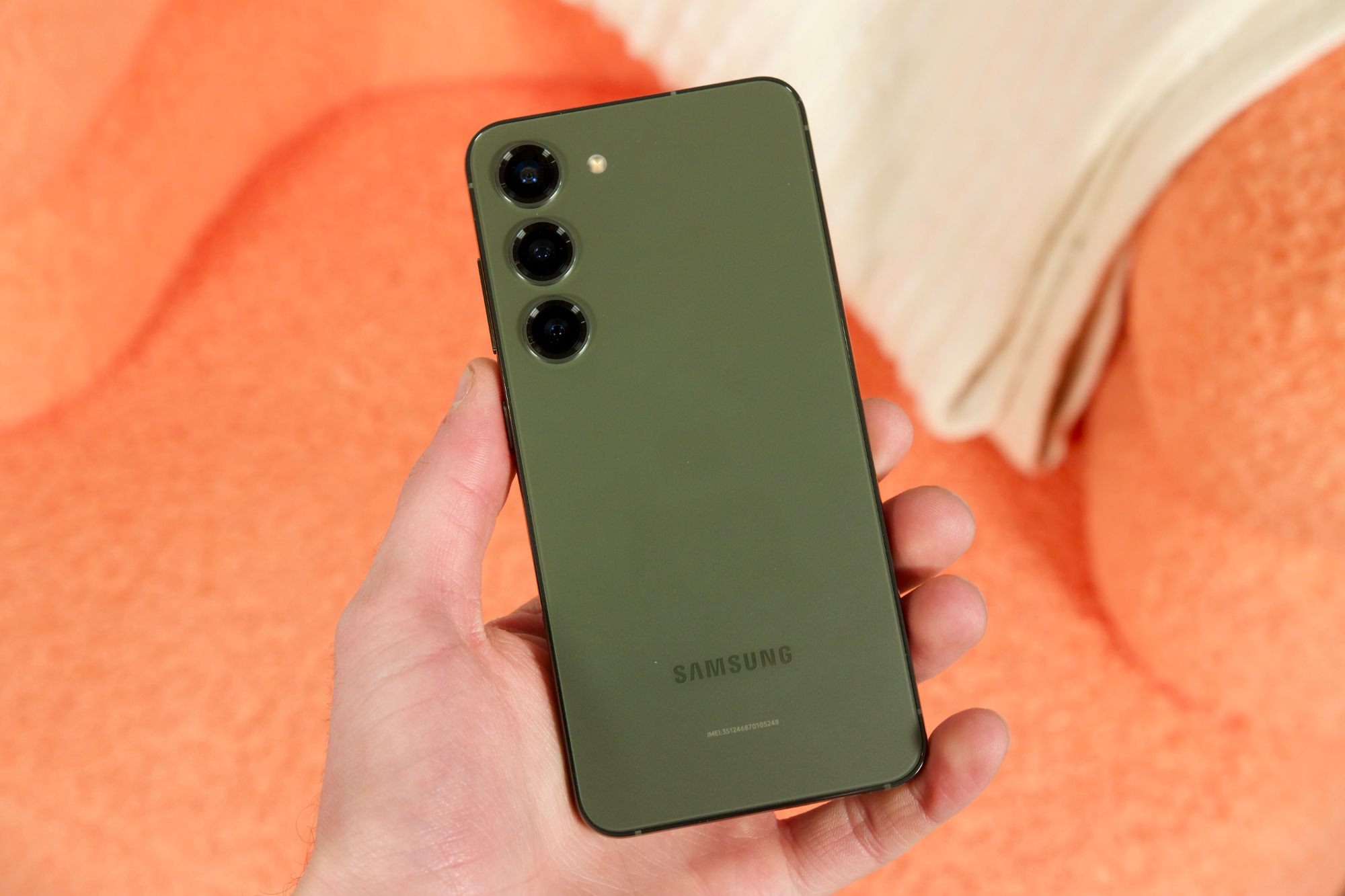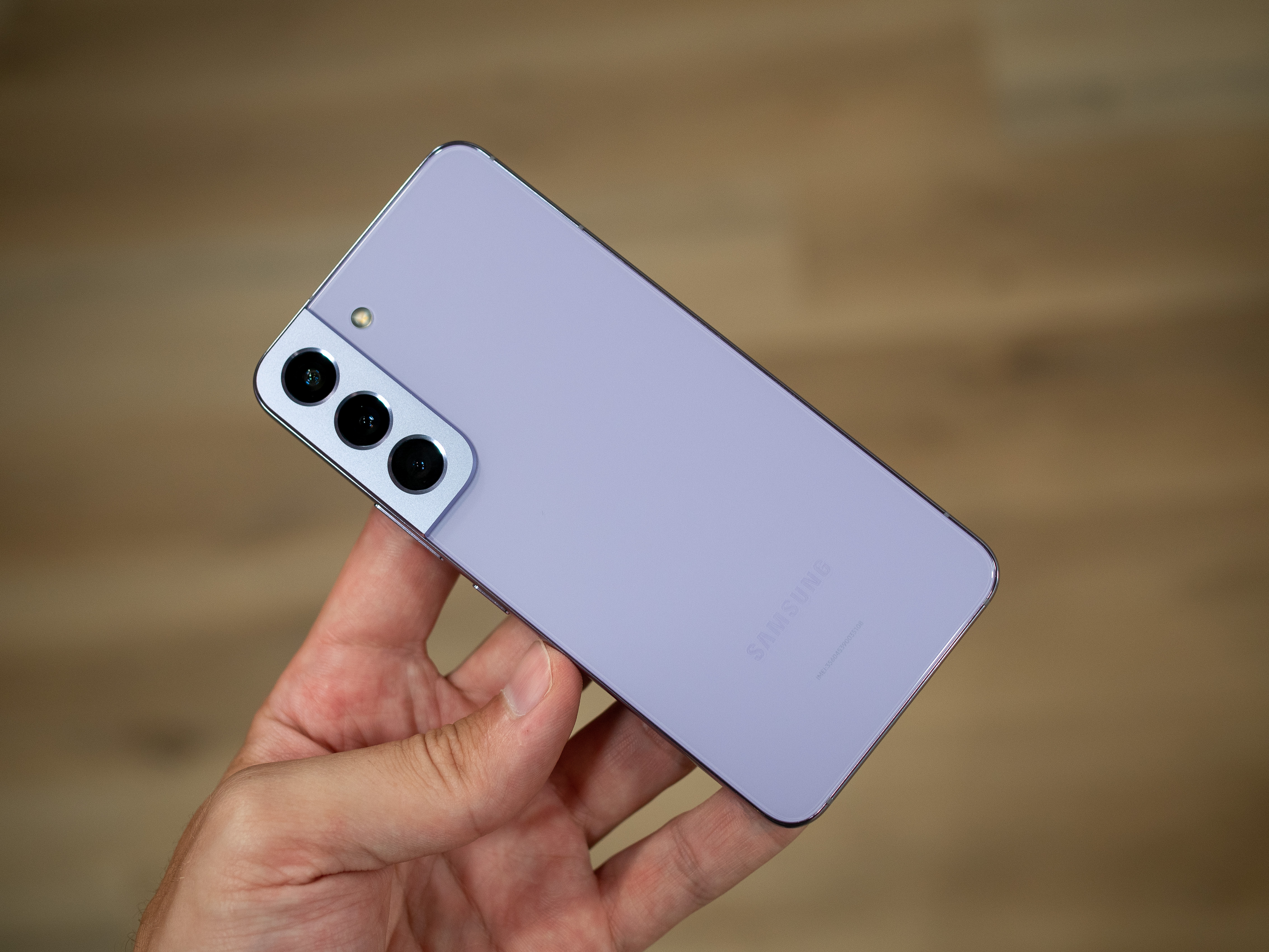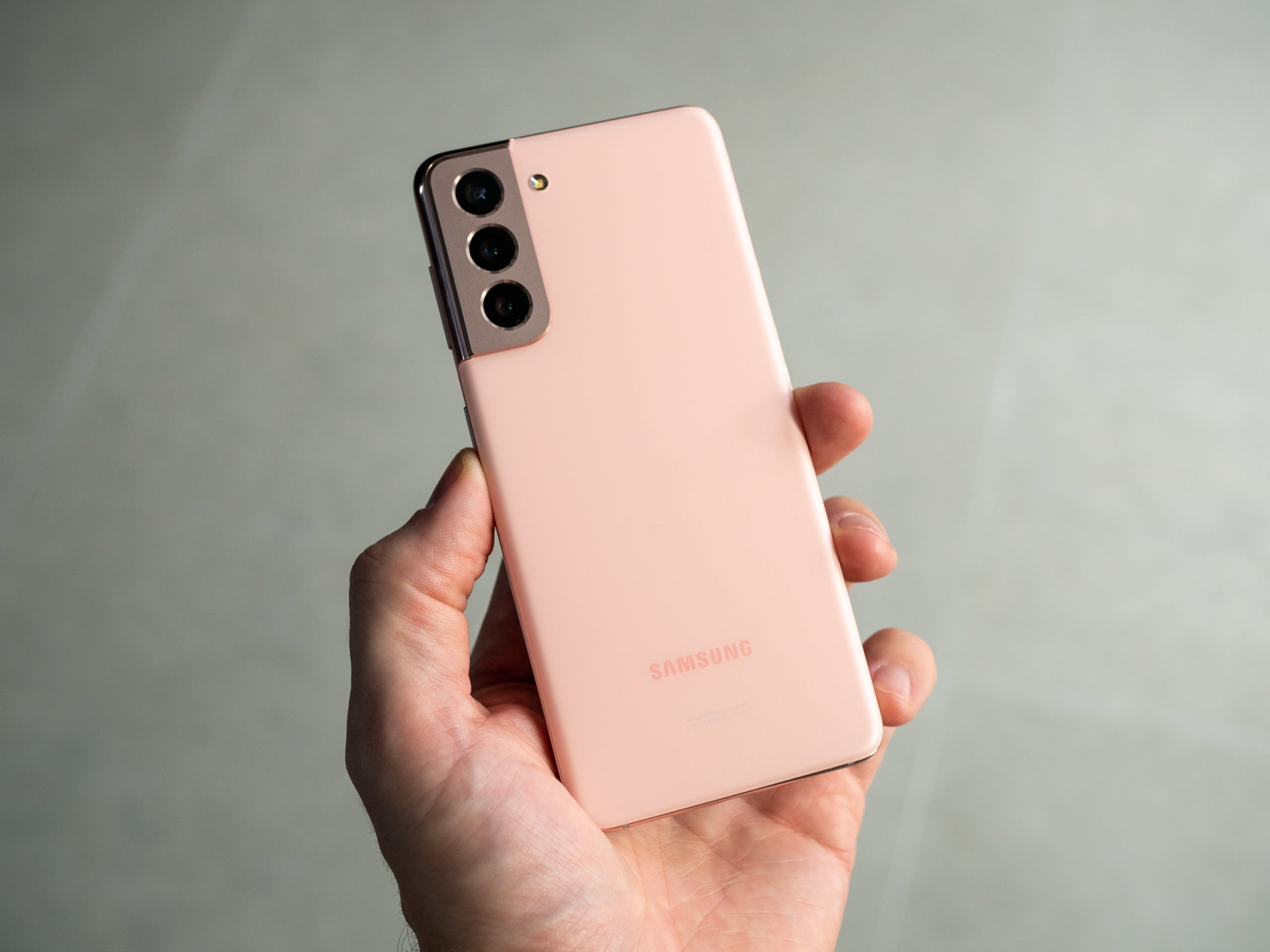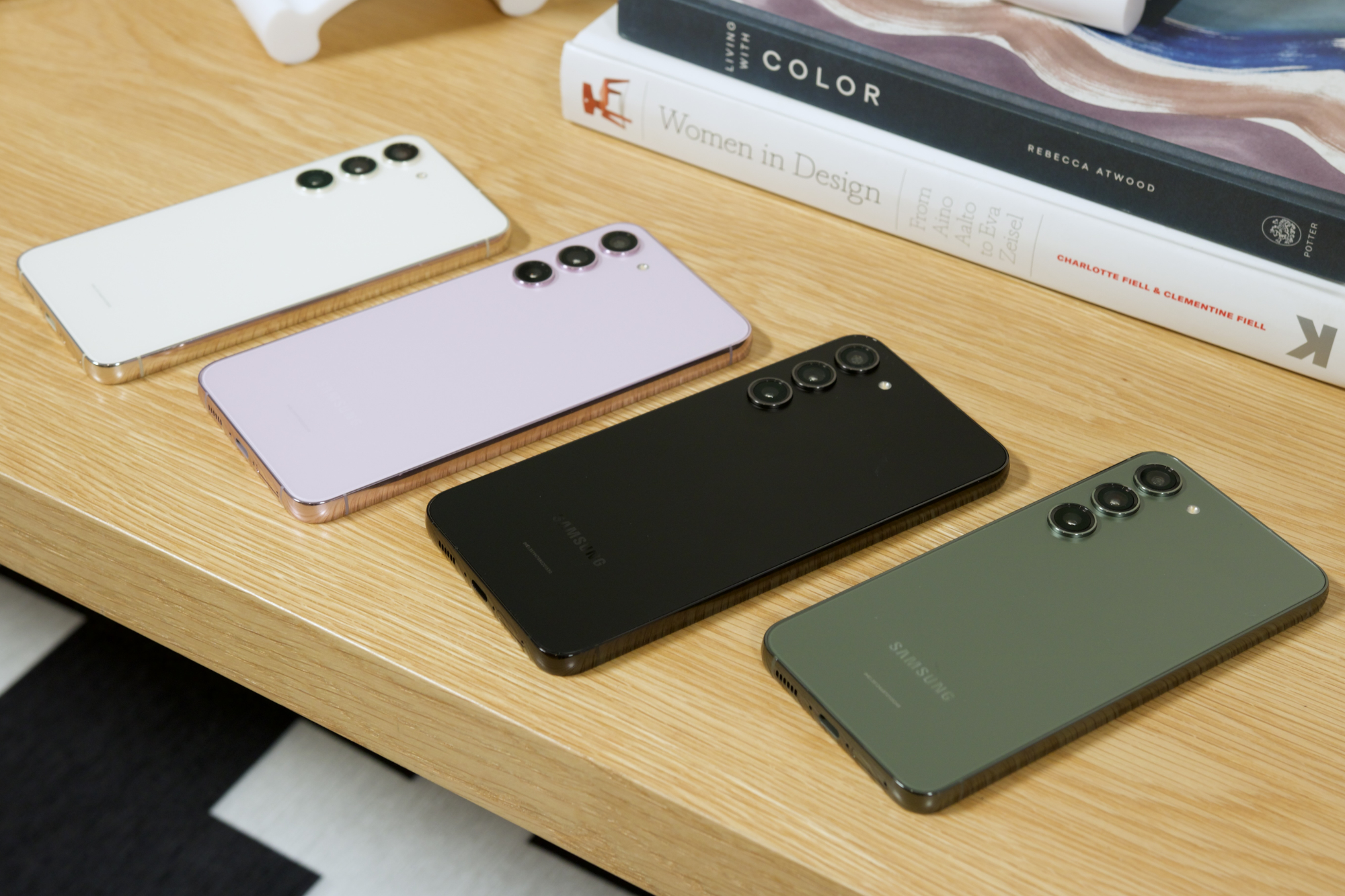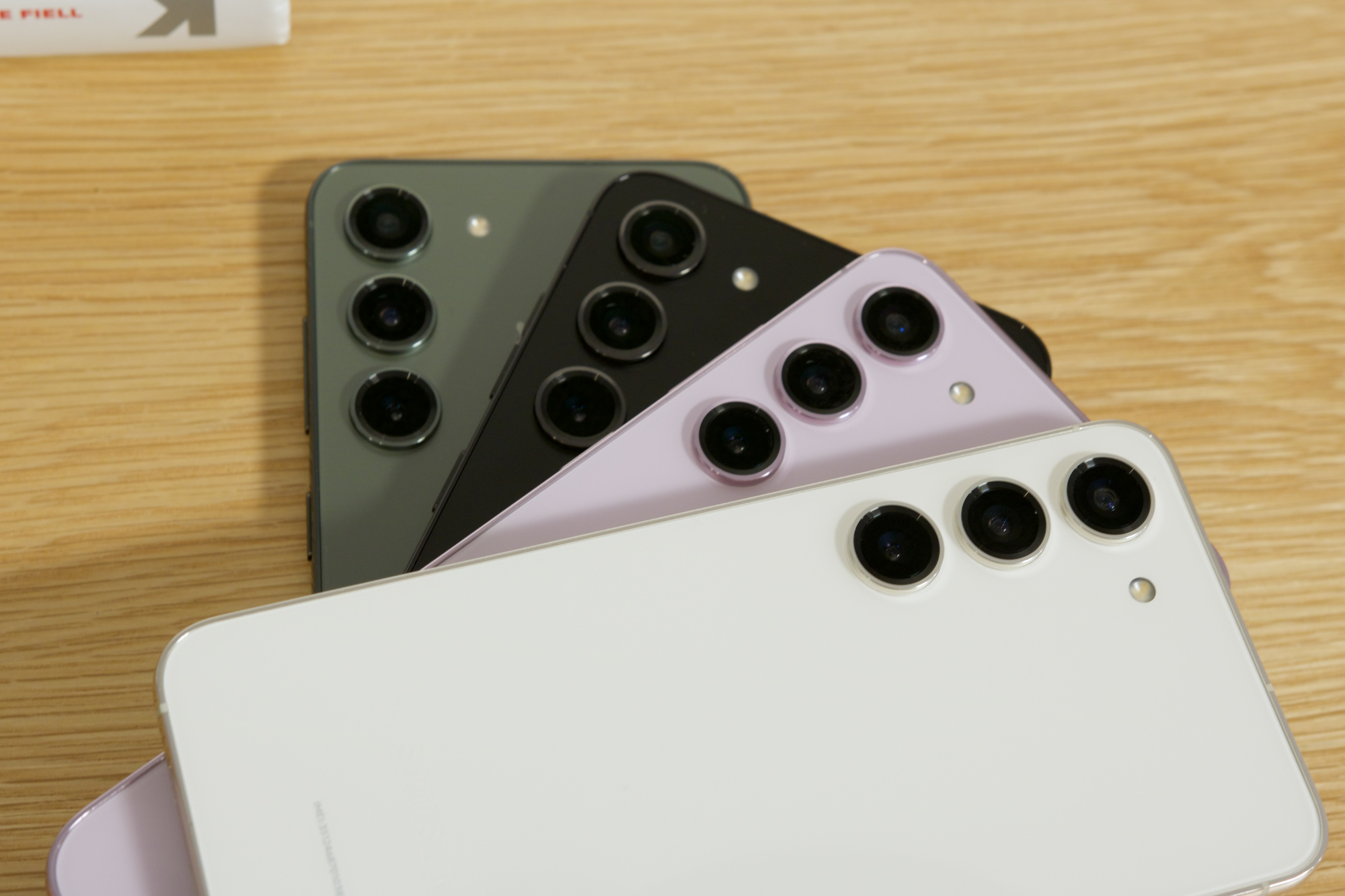
On paper, the Samsung Galaxy S23 and Galaxy S23 Plus don’t look like terribly exciting smartphones. And, to be honest, they kind of aren’t. They have similar designs as their predecessors, nearly identical camera systems, and a few small spec bumps here and there. It’s a fair argument to call these phones “boring” or “dull” because, when compared directly to last year’s handsets, there’s not that much new.
Going into my recent hands-on session with Samsung’s two newest phones, I was expecting to be pretty underwhelmed. But after getting to spend a couple of hours with the Galaxy S23 and S23 Plus, I was happily surprised. More testing in the future will show what these phones are truly capable of, but my initial impressions are extremely positive — and I can’t wait to get more time with them in the near future.
Familiar (yet different) designs
Starting with the Galaxy S21 series, Samsung introduced its now-iconic camera housing that allows the camera bump to flow seamlessly from the frame to the back of the phone. It was an elegant design that stood out from competing devices, and Samsung continued it with the Galaxy S22 series.
With the S23 lineup, however, that’s changed. The Galaxy S23 and S23 Plus now have the three camera sensors individually floating on the back— much like the Galaxy S22 Ultra. While seeing the design change in leaked renders initially had me concerned, I have to admit that it looks quite nice in person. It may not be the most original or creative layout, but the cameras look fine and harmonize the design with the Galaxy S23 Ultra.
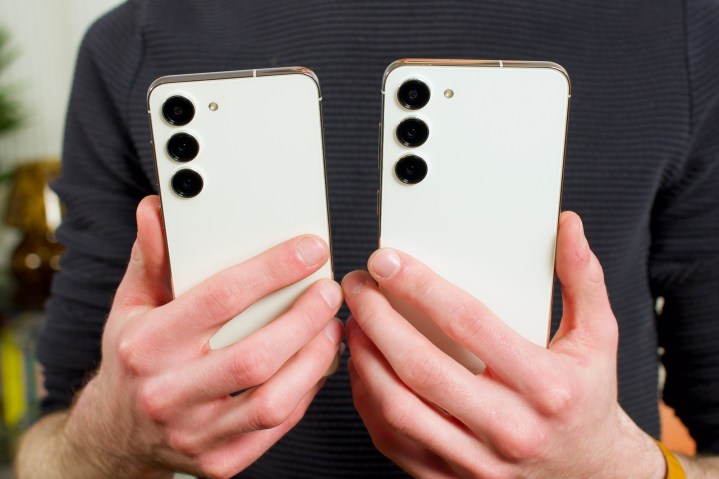
The in-hand feel is also great — especially for the smaller Galaxy S23. The 6.1-inch screen was easy to operate one-handed during my testing, and coming from my monstrous 240-gram iPhone 14 Pro Max, the 168-gram weight made it feel light as a feather.
And while the Galaxy S23 Plus is larger, it didn’t feel unwieldy whatsoever. It’s slightly heavier and thicker than the S22 Plus from last year, but it felt surprisingly manageable to navigate the roomier 6.6-inch display. Both phones also feature AMOLED panels with 120Hz refresh rates. In other words, they have vivid colors, deep blacks, and fluid animations — they just look stellar all-around.
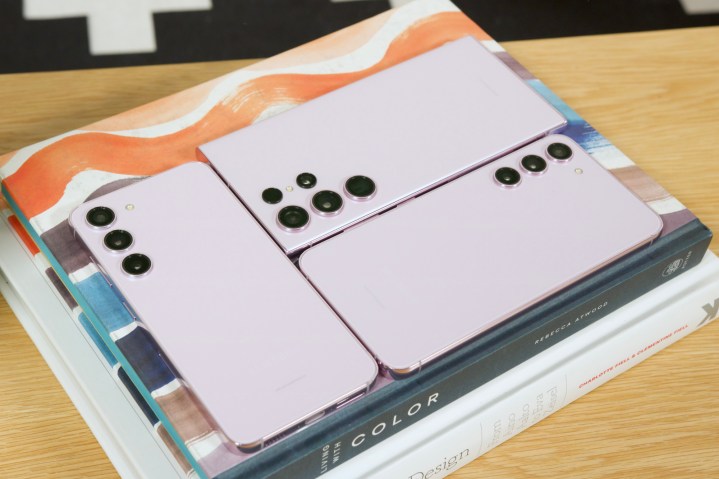
Other than that, the Galaxy S23 and Galaxy S23 Plus have the usual Samsung design characteristics. There’s an IP68 rating for protection against dust and water, a USB-C port, support for both wireless charging and reverse wireless charging (aka Wireless PowerShare), and Gorilla Glass Victus 2 covers the displays. Samsung’s also sticking with in-screen fingerprint sensors for the S23 and S23 Plus, though I didn’t get to test their performance during my hands-on session.
If I had one bone to pick with how the Galaxy S23 looks, it’d be the color selection Samsung’s chosen for this year’s releases. They aren’t bad, but they’re also not particularly eye-catching.
The options this year include Phantom Black, cream, green, and lavender. Green is my personal favorite and reminds me a lot of the Midnight Green iPhone 11 Pro. Lavender is nice, though it’s a bit more muted than it appears in our hands-on photos here. Phantom Black remains a great stealthy option, and Cream looks like a white phone you’ve been using for months without a case courtesy of its warm, creamy tone (hence the name).
The biggest upgrade is one you can’t see
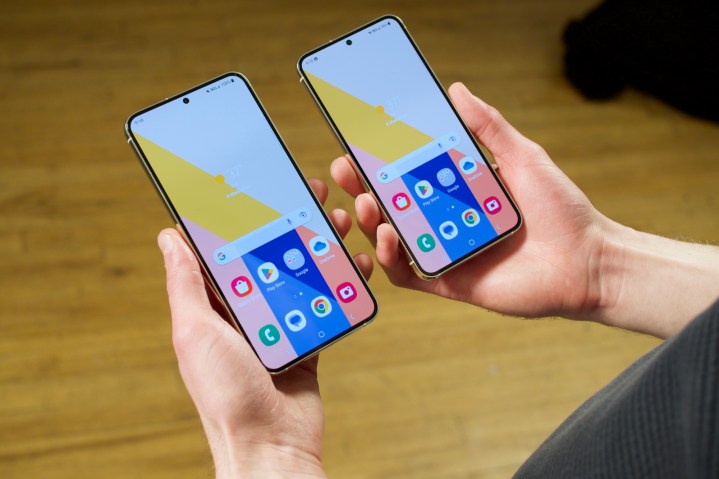
While the refreshed design may be the most immediately notable thing about the Galaxy S23 series, that’s not what has me the most excited. Instead, that distinction goes to the Qualcomm Snapdragon 8 Gen 2 chip inside the phones.
The full name of the chip is the Snapdragon 8 Gen 2 Mobile Platform for Galaxy. It’s mostly the same chip we expect to see in other Android flagships throughout 2023, but with a couple of important tweaks — namely, a higher CPU clock speed for one of the core processors, plus a promise from Samsung that the chip has been “optimized” for all three phones.
First impressions on the performance front are excellent.
All you need to know is that it makes the Galaxy S23 and Galaxy S23 Plus fast. Like, really, really fast. Opening apps, scrolling through home pages, navigating websites on Chrome — all of it moved flawlessly on the S23. And even while bouncing between apps and websites, never did I notice the Galaxy S23 heating up under pressure.

You still get 8GB of RAM for both phones, plus 128GB or 256GB of storage for the Galaxy S23. In a surprise move, however, the Galaxy S23 Plus now comes with 256GB as the default amount of storage — with an optional upgrade to 512GB if you need more room. It’s a great move for Samsung, and something Apple should take note of with future iPhones.
We need a lot more time to truly put the S23 and S23 Plus through their paces, but first impressions on the performance front are excellent. And perhaps even more exciting is the prospect of improved battery life.
Along with a 45% increase in power efficiency compared to the Snapdragon 8 Gen 1 chip used in the Galaxy S22, Samsung has also fit larger batteries into the phones — a 3,900mAh battery for the S23 and a 4,700mAh one for the S23 Plus. Powerful phones are one thing, but powerful phones with reliable battery life are even better, and the Galaxy S23 is poised to deliver big-time on that front.
Not much focus on the cameras
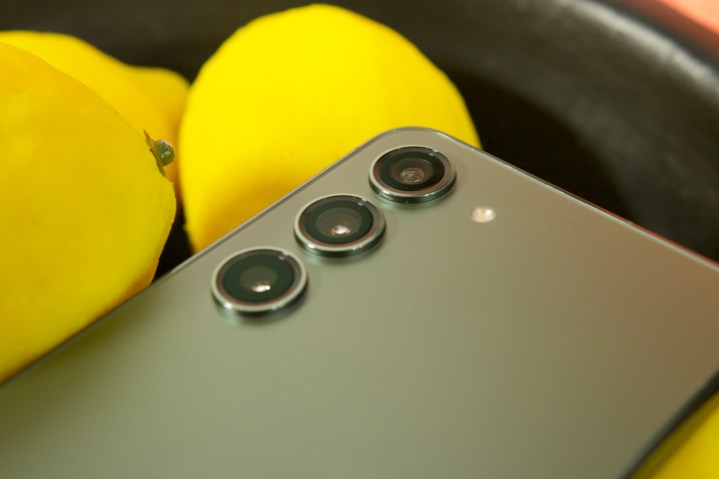
The big camera news for the S23 lineup is the 200MP camera on the Galaxy S23 Ultra — but what about the S23 and S23 Plus? Admittedly, there’s nothing to write home about. You get a 50MP main camera, 12MP ultrawide camera, and 10MP telephoto camera with 3x optical zoom and 30X Space Zoom. Yes, those are the exact same camera specs from the S22 and S22 Plus. The only new sensor is a 12MP selfie camera to replace last year’s 10MP one.
Despite the familiar hardware, Samsung is touting a few smaller upgrades for this generation. You can expect 4x more dynamic color range and an improved AI image signal processor, plus support to capture 50MP RAW images. And that’s about it.
The Galaxy S22 lineup already had reliable cameras, so a slightly upgraded version of that system isn’t a bad proposition — it’s just not the most exciting one.
The Galaxy S23 makes boring exciting
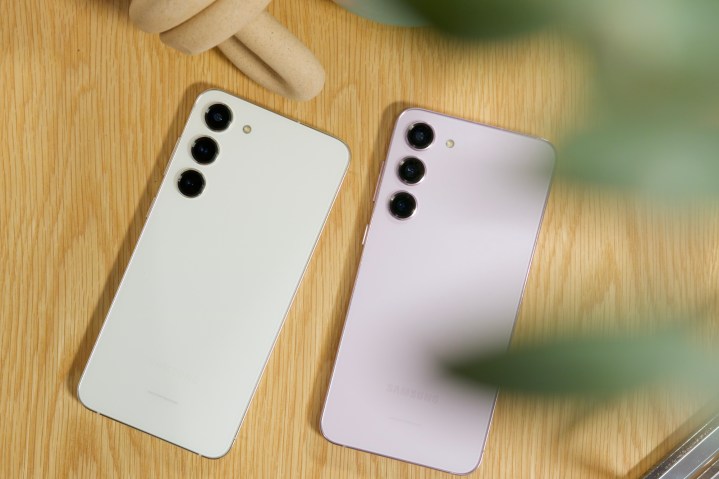
And that’s the Galaxy S23 and S23 Plus! They’re not much different from the S22 and S22 Plus before them, and that’s because they don’t have to be. These aren’t phones for someone who has last year’s models. These are phones for someone upgrading from a Galaxy S21, S20, or an older model.
For those people — or someone who’s getting their first Samsung Galaxy smartphone — the Galaxy S23 and S23 Plus have just about everything you could ask for. Great displays? Check. Blazing performance? Yep. Reliable cameras? Almost certainly. Pair that with an update guarantee that beats Google’s own offer for Pixels (four major Android OS upgrades, plus five years of security updates), and it’s difficult not to be excited about what the S23 and S23 Plus bring to the table. If this is what qualifies as a boring phone in 2023, I hope every other phone this year is just as dull.
The regular Galaxy S23 starts at $799, while the Galaxy S23 Plus will set you back at least $999. Preorders are open now, and regular sales begin February 17.
Editors’ Recommendations

